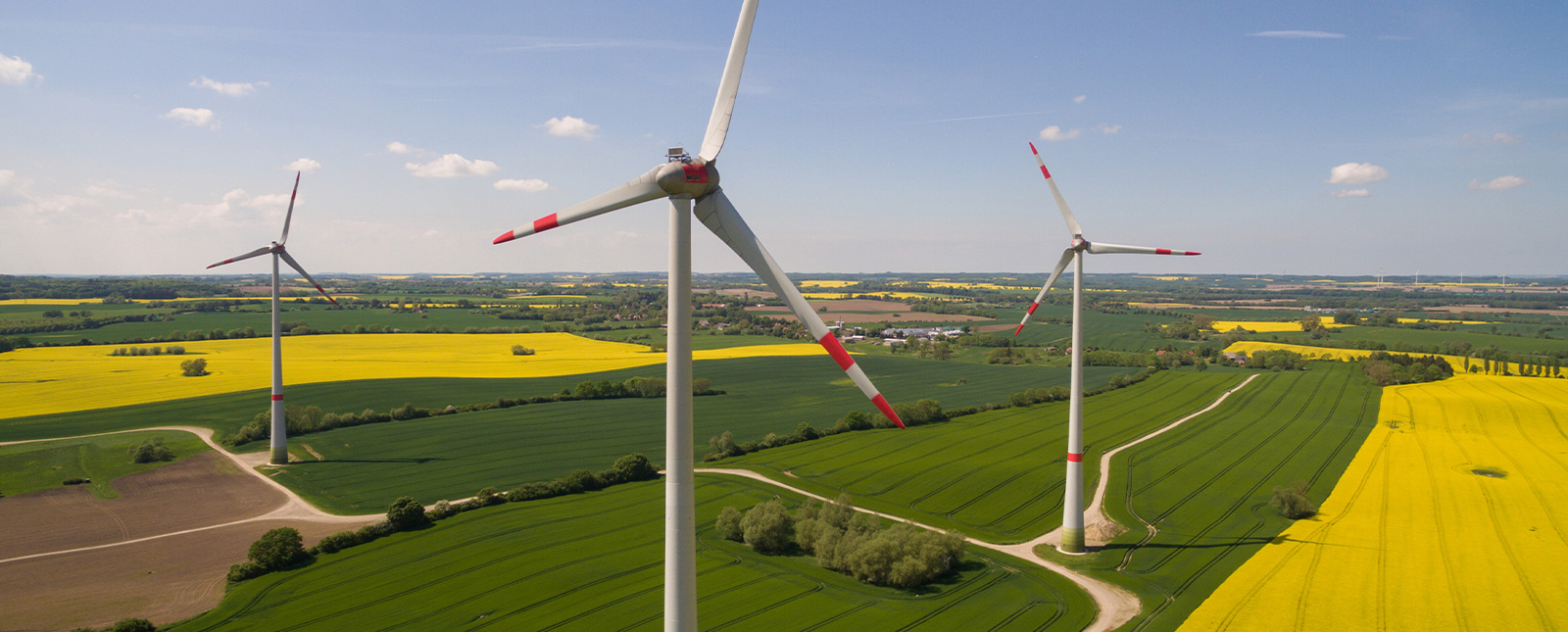
Electricity from Wind
About wind power.
Wind power is one of the oldest forms of energy used by man. Windmills have been used for centuries to make mechanical work easier. In the 19th century, the first attempts were made to convert the mechanical energy into electrical energy. The advance of wind power began with the progress in technology, the increasing demand for energy and growing awareness for the environment.
Error: no data found!
Components of a wind turbine
Cutting-edge wind turbines for grid-connected power generation are high-tech units consisting essentially of 50 to 150 m tall tower structures, the nacelle with mechanical equipment and the rotor with horizontal axis and three rotor blades..
Error: no data found!
Principle of DunoAir Windparks
The largest wind turbines we use in our planning now achieve an output of 3 to 7.5 MW and have a rotor diameter of 80 to 141 metres. In addition to continuous output monitoring and control, the wind turbines have early fault detection and systems for lightning protection and are usually located in wind farms. While individual wind turbines were often operated in the past, most wind turbines are now combined in wind farms so that synergy effects can be generated with regard to grid feed-in and maintenance work. The landscape is also less affected by the large state-of-the-art wind turbines in wind farms as individual locations are better utilized so that other areas can remain free. In addition, the areas around the wind turbine continue to be available to agriculture or nature.
Error: no data found!
Maximum energy output
Depending on the type, a wind turbine starts to produce electricity from a wind speed of approximately 3 metres per second (m/s). The maximum energy output is achieved at a wind speed of 12 to 13 m/s. When the wind speed exceeds 28 m/s (hurricane force), the turbines are automatically switched off. The turbines only switch on again when the wind speed has subsided to an acceptable value.
